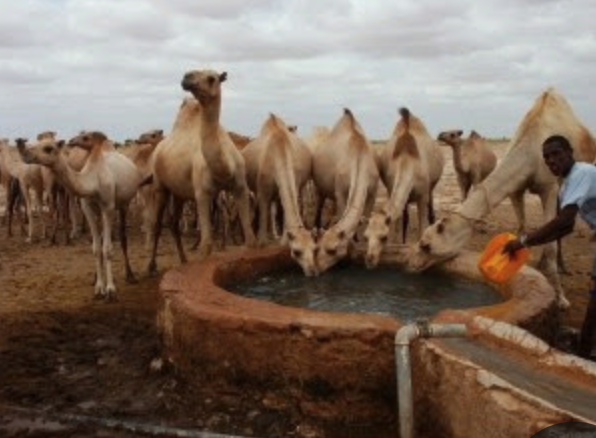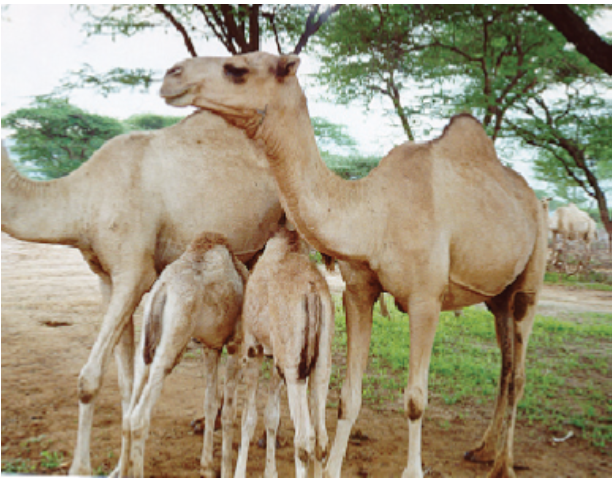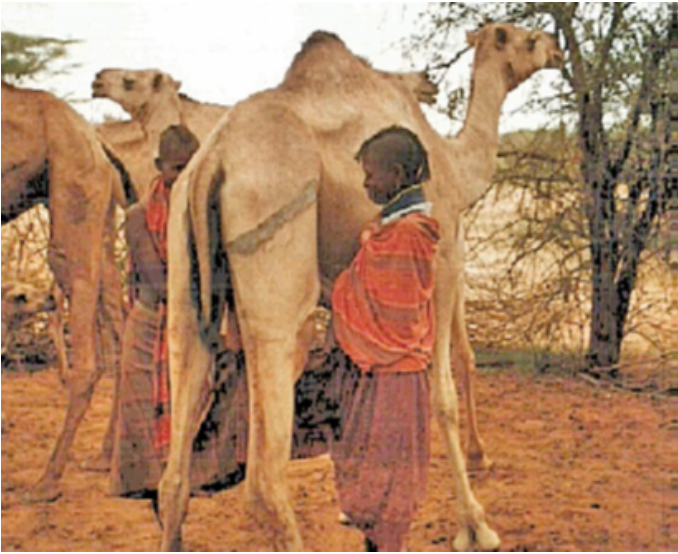The 3 main breeds of camel found in Kenya are Somali, Rendille/Gabbra and Turkana. These are kept by communities who bear the same names as those of the breed. There is a fourth breed of camel called Pakistani which was imported from Pakistan into Laikipia ranches in Kenya in the early 1990s. However, only a few pure Pakistan camels exist while crosses with Somali or Turkana breeds have since moved out of Laikipia to Samburu, East Pokot, Kajiado, Northern Tanzania, Mandera and Marsabit districts. Following is a description of these breeds;
Somali Camel

(c)Somalilandpress
Purpose:
- Good for milk production as it can give 3 to 5 liters in a day
- Milking the camel three times a day guarantees even more milk
- Lactation length is 1 to 1.5 years
Body color:
- Cream/brown
Mature body weight:
- Ranges from 450 – 850 kg
- First calving occurs between 4 – 5 years
- Average standing height is 2 meters when mature
Feed requirements:
- Heavy feeders requiring 8 to 12 hours of feeding in a day depending on feed availability
- Are more comfortable feeding on shrubs because of their height
Advantages:
- More milk
- Matures early
Disadvantages:
- Cannot be reared in areas with rough terrain or rocky hillsides due to large size
- Suffer more when feed availability is low
Within the Somali breed are four sub-types namely Hoor, Siftarr, Aidimo and Gelab. These differ in physical, production and adaptability characteristics. While hoor is the highest milk producing sub-type, it is the least hardy. Gelab on the other hand is the smallest in body size, least milk producing but most hardy.
Rendille/Gabbra Camel

(c)Mette Vaarst
Milk yield:
- 1 – 3 liters per day
- Lactation length of 1 to 1.5 years
Body color:
- Cream or brown
Mature body weight:
- 300 – 550 kg
- First calving occurs between 5 – 6 years
- Average standing height is 1.8 meters
- Feed requirements: Less than Somali, requiring 8 – 10 hours of grazing
Advantages:
- Does better under poor pasture conditions and rough terrain
- Tolerate drought conditions better than Somali
Disadvantage:
- Lower milk yield
- Late maturity
Turkana Camel

(c)Mette Vaarst
Milk yield:
- Lower than Somali and Rendille/Gabbra that is, 1 to 2.5 liters/day
- Lactation length of about 1 year
Body color:
- Mainly grayish/dark
Mature body weight:
- 250 – 500kg
First calving:
- Occurs between 5 and 6 years of age
- Average standing height is 1.7 meters
- Feed requirements is less than that of Gabbra/Rendille, requiring about 7 hours of grazing
Advantages:
- Most hardy of all the breeds
- Very agile and able to climb steep lava hills because of small body size
- Least affected under situation of feed scarcity
Disadvantages:
- Least milk yield
- Matures late
Pakistani Camel

(c)Mette Vaarst
Purpose:
- Of all the breeds, this is the best for milk production
- Produces 4 – 7 liters of milk daily under ranch conditions
Body color:
- Predominantly chocolate
- Mature body weight: 400 – 700 kg
- Invariably drooping lower lip
First calving:
- Occurs between 4-5 years of age
- Averages standing height 1.9 meters
Feed requirements:
- It is a heavy feeder
Advantages:
- High milk yield
Disadvantages:
- Insufficiently tested on rough terrain
- Less hardy
Note: Across all the breeds, males are generally heavier than females